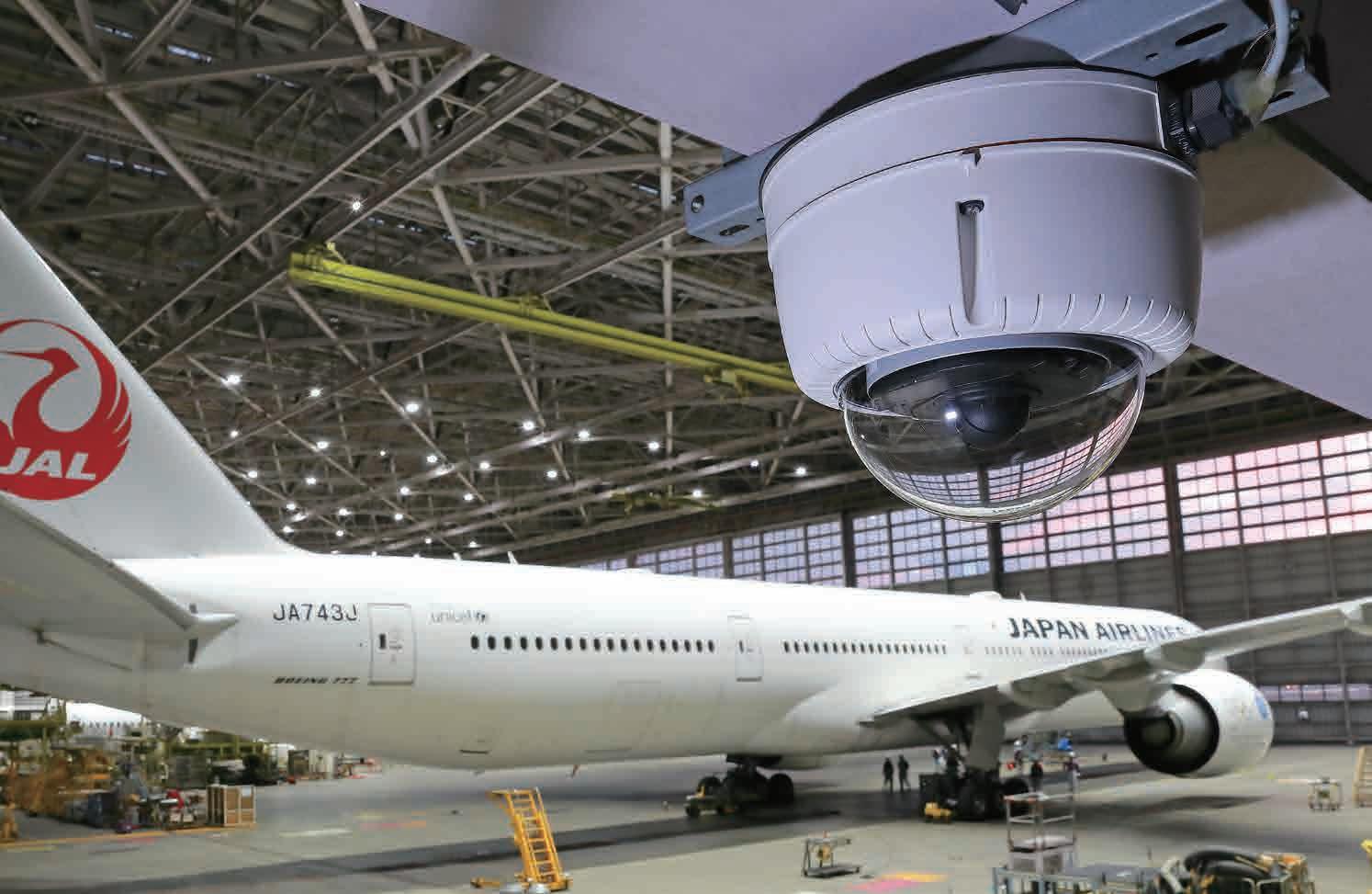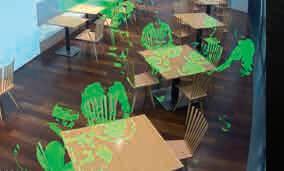
3 minute read
Network Cameras
Canon network cameras are installed in the JAL hangar at Haneda Airport in Tokyo, Japan.
reduces the hard disk drive capacity requirements and makes the long-time video recording possible, allowing for a high volume of footage from multiple cameras to be stored.
Overcoming On-Site Challenges to Improve Operations—the Expanding Possibilities of Network Cameras
“When the completed system began operating, we witnessed improvements on the hangar floor,” says Mr. Misawa.
Before, a late arrival of an aircraft, in spite of numerous exchanges made with the aircraft, resulted in lost time waiting at the hangar. After the system was introduced, it became possible to monitor the aircraft coming in or leaving in real-time via the system. Additionally, we are able to now visually check the progress of work using the cameras.”
The primary mission of maintenance crews is to precisely complete the work without any error in the limited time available.
“At JAL Engineering, we coined the term ‘Zero Zero 100’ to represent our goal of zero irregular operations, zero in-flight malfunctions and 100% on-time departures. I feel that the system renewal has allowed us to achieve improvements in both security and productivity.”
Canon’s network camera system watches over and helps improve business operations for the aircraft maintenance floor. Using the power of cutting-edge technologies, Canon will strive for the contribution to safety and security in a range of various fields.
Canon’s Video Content Analysis Solutions Are Generating New Value from Video
Canon’s high-precision, high-resolution network cameras offer even greater value when used in combination with software to provide video content analysis solution. The People Counter video content analysis software developed by Canon can count the number of people in an area or the number of people that cross a specified line. Canon’s Moving Object Mask video content analysis software can render a moving object as a silhouette. It enables monitoring the availability of seats at a venue, overcrowding, while protecting privacy. Canon will continue to commercialize video content analysis software for marketing and other applications, adding value to network camera video.
People Counter with silhouettes

Reducing
Dose for Patients
Canon Medical Systems has developed technology that uses deep learning to produce high-resolution CT images at a low radiation dose. The technology reduces risk for patients while providing high-quality images to healthcare personnel for accurate diagnosis.
The Relationship Between CT and X-Ray Dose
X-ray Computed Tomography (CT) equipment has a significant role in providing clinicians with the tools for diagnosis and treatment planning.
CT image quality is closely related to radiation dose. High image quality can be obtained with greater dose, but that means increased X-ray exposure for the patient. A low radiation dose reduces exposure to radiation, but the trade-off is lower image quality.
To s o l ve t his p r o b l e m , C a n o n M e d ic al Sy s t e m s (Canon Medical) has been developing various innovative technologies to produce high-resolution images without compromising on radiation dose. One is AIDR 3D (Adaptive Iterative Dose Reduction 3D), which reduces exposure by 75%. Another is FIRST (Forward projected model-based Iterative Reconstruction SoluTion), which further reduces exposure and improves image quality. Such technologies produce high-quality images while reducing patients’ radiation dose. These new technologies greatly expand the practical uses for CT to applications such as perfusion and dynamic movement.
AiCE, a CT Imaging Technology Using Deep Learning
Canon strives to continue to reduce radiation dose on patients to improve their quality of life. In April 2018, Canon released a high-resolution CT system equipped with AiCE (Advanced Intelligent Clear-IQ Engine), CT imaging technology using deep learning.
AiCE is a state-of-the-art technology designed to reduce noise found in CT images through deep learning while producing high-quality images. The clearer images allow for a more accurate diagnosis at the low radiation dose level no different from that of a normal chest X-ray. AiCE offers exceptional noise reduction while eliciting details in the CT image.
Also, with conventional CT systems, the image processing used to produce high-resolution images generally takes a lot of time. AiCE harnesses the computational power of deep learning neural networks (a network structure patterned after the connectivity of neurons in the human brain) to reduce noise, resulting in faster image output that contributes to improved workflows in the healthcare field.










